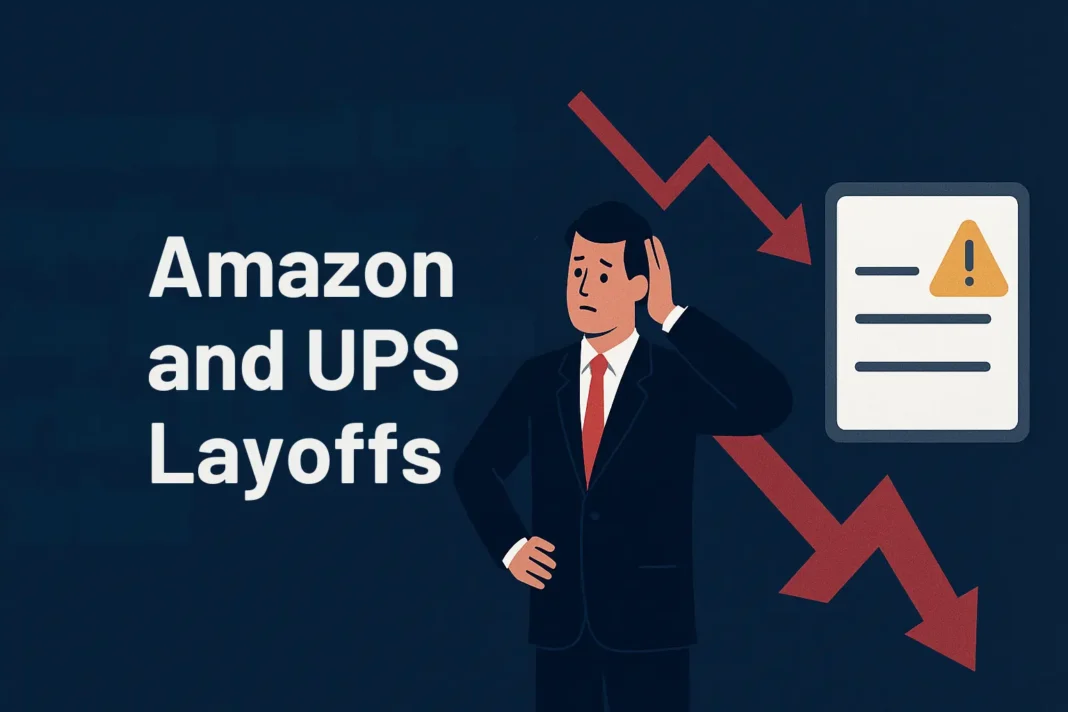Amazon and UPS Layoffs
You’ve probably seen the headlines: Amazon and UPS are cutting jobs. It sounds alarming — like a sign the economy might be heading into trouble. After all, when giant companies start trimming their workforces, it often feels like the first crack in the foundation. But take a closer look, and the story behind those headlines might surprise you.
Despite layoffs making the news, new jobless data paints a far more balanced picture. The U.S. job market isn’t collapsing — it’s stabilizing. Economists are calling this a “soft-but-stable” labor market, and understanding what that means can help you make smarter career and financial decisions.

What “Soft-but-Stable” Really Means
Think of the job market like an engine. For the past few years, it’s been running hot — maybe too hot. Employers were desperate to hire, wages were rising fast, and competition for workers was fierce. That’s great in the short term but can lead to inflationary pressure.
Now, that engine is cooling off just enough to prevent overheating. That’s the “soft” part — the market is easing up a bit, with fewer open positions than during the hiring frenzy. But the “stable” part means it’s not stalling out. People aren’t losing jobs in massive numbers. Companies are adjusting, not panicking.
What’s Really Behind the Amazon and UPS Layoffs
When companies like Amazon or UPS make headlines for layoffs, it’s easy to assume something’s wrong with the whole economy. But in most cases, these cuts are strategic adjustments — not signs of a widespread downturn.
Amazon, for example, expanded aggressively during the pandemic to meet skyrocketing e-commerce demand. Now that growth has leveled off, they’re right-sizing operations. UPS is doing something similar — streamlining after record delivery volumes in 2020–2021.
In other words, these layoffs are more about efficiency than crisis. While painful for those affected, they don’t signal a nationwide job collapse.
Jobless Claims Tell a Different Story
Weekly jobless claims — the number of people filing for unemployment — remain historically low. That means most Americans who want to work still can. Even in industries hit by layoffs, there’s enough job mobility for displaced workers to find new opportunities.
This shows resilience. The broader economy is absorbing these job cuts without widespread ripple effects.
Should You Be Worried About Job Security?
If you’re not at Amazon or UPS, you’re probably safe for now. The overall labor market is holding steady, with unemployment staying low and job creation continuing in sectors like healthcare, construction, and technology support services.
That said, this is a good moment to revisit your financial safety net. Even in stable times, layoffs can happen unexpectedly. Build an emergency fund that covers 3–6 months of expenses and keep your résumé and LinkedIn updated.
Why a Stable Job Market Is Good News for Your Finances
A “soft-but-stable” market isn’t bad news — it’s actually a positive sign. It means the economy is cooling gently without crashing. For you, that stability can mean:
-
Steady income security — fewer sudden job losses.
-
Controlled inflation — slower wage growth helps stabilize prices.
-
Lower interest rate pressure — the Federal Reserve doesn’t need to hike rates aggressively.
This combination can support healthier savings, better loan conditions, and more predictable financial planning for households.
Building Personal Financial Resilience
Even in a stable economy, personal resilience is key. Here’s what you can do right now to strengthen your financial foundation:
-
Build your emergency fund. Aim for at least three months of expenses saved in a high-yield savings account.
-
Diversify your income. Consider a side hustle, freelance work, or passive income stream.
-
Invest in yourself. Upskill through online courses or certifications in growing industries like tech, data, or healthcare.
-
Track your spending. Use budgeting apps to keep your finances transparent and under control.
-
Stay informed. Follow reliable financial news sources to spot early trends in your industry.
Think of the Economy Like a Car
Picture the economy as a vehicle. For a while, it was redlining — running too hot, risking burnout. Now, it’s cruising at a comfortable speed. It’s not accelerating like before, but it’s also not slamming on the brakes. That steady pace is a sign of balance, not decline.
This allows both businesses and consumers to plan ahead without the fear of sudden market shocks.
The Bottom Line
The headlines about Amazon and UPS layoffs may sound scary, but the truth is far more optimistic. The U.S. labor market remains strong, steady, and resilient. While some sectors are trimming excess, most industries continue to grow and hire.
The best approach? Stay proactive, not panicked. Keep your finances organized, continue building your skills, and you’ll be prepared for whatever shifts come next.
The economy is simply shifting gears — and that’s often a good thing.
FAQs
1. Are Amazon and UPS layoffs a sign of a recession?
No. These layoffs are primarily strategic adjustments as both companies balance growth and costs.
2. What industries are still hiring?
Healthcare, renewable energy, construction, and tech support continue to show strong demand.
3. Should I start saving more money right now?
Yes — it’s always wise to strengthen your emergency savings during economic transitions.
4. How can I make myself layoff-proof?
Focus on upskilling, networking, and maintaining professional visibility.
5. Will interest rates go down if the job market stays stable?
A steady labor market gives the Federal Reserve more flexibility, increasing the chances of rate cuts over time.







